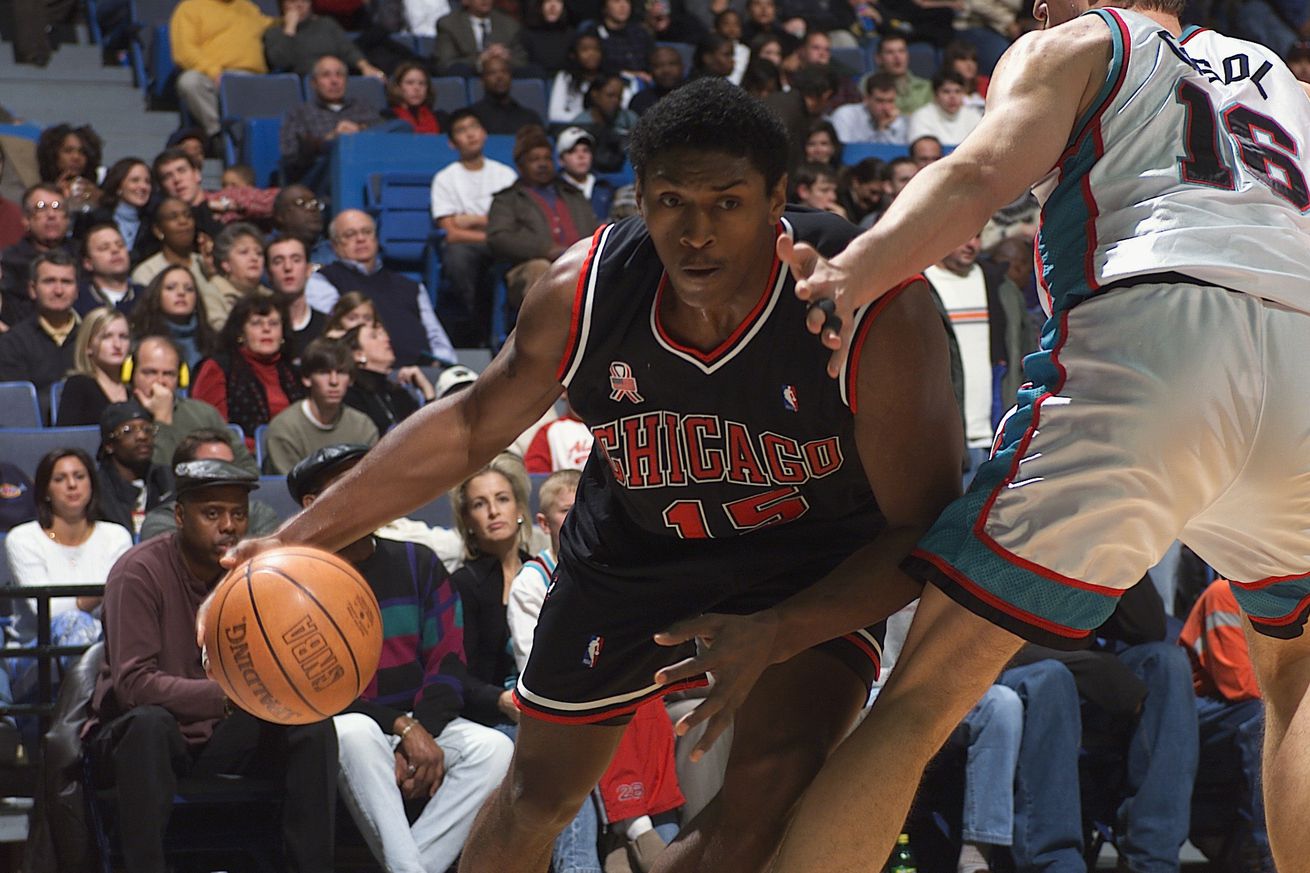
The Statistical Doppelganger Machine returns
I know what you’re thinking. It’s late July. Summer League is over. The major free agents are signed. Seven-team trades are in the books. It’s time for Kevin to break out his Statistical Doppelganger Machine.
You’re in luck. Out, the machine is broken.
First through wringer: French wing Bilal Coulibaly.
Coulibaly, who turns 21 tomorrow (July 26), had a second season that was somewhat disappointing and better than expected. Let me unpack.
The disappointment stems from what people (me included) hoped to see. I can’t speak for everyone, but I wanted him to transmogrify into Scottie Pippen in year two. Was that realistic? Of course not. But I still hoped for it.
Now let’s shift to the “better than expected” part and start by backing up. As a 19-year-old rookie, Coulibaly posted a PPA of 49. PPA is my all-around production metric, which rewards players for doing things that help a team win, and dings them for things that hurt — each in proper proportion to much it contributes to winning and losing.
PPA is pace neutral and includes accounting for role and defense. In PPA, 100 is average, higher is better, and replacement level is 45.
So, Coulibaly’s PPA 49 first season means he performed at about replacement level. That’s not good by NBA standards, but it’s pretty normal for a teen-aged rookie. How normal?
Using Coulibaly’s rookie season 49 PPA forecasts a year two PPA of 54. Then a 78 in year three, and finally cracking average (102) in his fourth season. Assuming a “normal” career progression, we’d expect 9-10 average or better seasons with a career peak around 130. That’s a good player — long-time starter and contributor.
But Coulibaly last season posted a 75 PPA — catapulting “normal” improvement by 21 points in my PPA rating and reaching a level in year two of his career that he’d have been expected not to reach until year three. And he’s entering his third year, which is a time when players tend to improve significantly.
In fact, according to my career forecaster, players tend to make their biggest improvements at ages 21, 22, and 23 (in order).
What does last season’s 75 PPA mean? If Coulibaly follows a “normal” improvement pattern, he should crack average next season (a year ahead of schedule) and continue improving until about age 26 where he’ll peak in the 170s or 180s. That’s typically a score good enough to make an All-NBA team.
Is this anything like a sure thing? Of course not. He still has to do the work, stay healthy, etc. But key point here is to relax a bit when it comes to youngsters and their development. Becoming a good NBA player takes some time. He might not work out…but he also might.
Let’s turn now to The Statistical Doppelganger Machine. For those who haven’t read previous installments, The Machine crunches together 14 categories of information, including age, playing time, and an array of per possession box score stats. It spits out a list of player seasons from history “most similar” to the reference season. In this case, Coulibaly’s 2024-25 season is the reference, so The Machine gives me a list of player seasons most similar to his performance last season.
For reasons I still haven’t been able to quite figure out, players tend to get “most similars” from players of the same position, even though factors like position, size, and athletic tools are NOT part of the system.
Anyway, here’s the list:
- Metta World Peace, Chicago Bulls, 1999-00 | PPA: 91 — This was the player formerly known as Ron Artest’s rookie season when he applied for and got a job at Circuit City. He apparently listed his previous job as “NBA player” and wrote down Bulls general manager Jerry Krause as a reference. World Peace (Peace?) had some mental health issues, but on the court was a helluva defender and good all-around player for 17 seasons. He retired at age 37.
- Brandon Ingram, Los Angeles Lakers, 2017-18 | PPA: 79 — This was Ingram’s second season, which was a significant improvement from a terrible rookie year. Year three was about the same, and he then made a leap in year four. After that, Ingram’s performance flattened out — his best season thus far was a 142 PPA in year five.
- Shaedon Sharpe, Portland Trail Blazers, 2023-24 | PPA: 63 — Year two for Sharpe, and it was about the same as his rookie year but shorter and more injury-plagued. In year three, Sharpe’s PPA reached 95. This comp surprised me a bit, but I checked the inputs and found that their statistical production was similar except that Coulibaly’s was a bit better in most categories on a per possession basis.
- Wilson Chandler, New York Knicks, 2008-09 | PPA: 78 — Here’s a cautionary tale. Chandler posted a 50 PPA his rookie year, which he followed up with a 78 in year two. And then he suffered an array of injuries and his improvement stalled. His best season was a 105 PPA in his fourth season.
- Jason Richardson, Golden State Warriors, 2001-02 | PPA: 84 — This was rookie year Richardson and his age 21 season. His best season was a 141 PPA at age 25.
Other players showing up as reasonably close comps for Coulibaly, include Victor Oladipo (who was becoming an outstanding player before suffering multiple quad tendon ruptures), another season from World Peace and Richardson, plus seasons from Langston Galloway, Brandon Knight, and Lu Dort.
A few others in the “not quite as similar but still kinda” bucket: Ray Allen (yes, that Ray Allen), Chauncey Billups, rookie year Jaylen Brown, and second year Scottie Pippen.
How much did Coulibaly change from year one to year two? There are more than 2,000 player seasons more similar to Coulibaly’s second season than his own rookie season.
